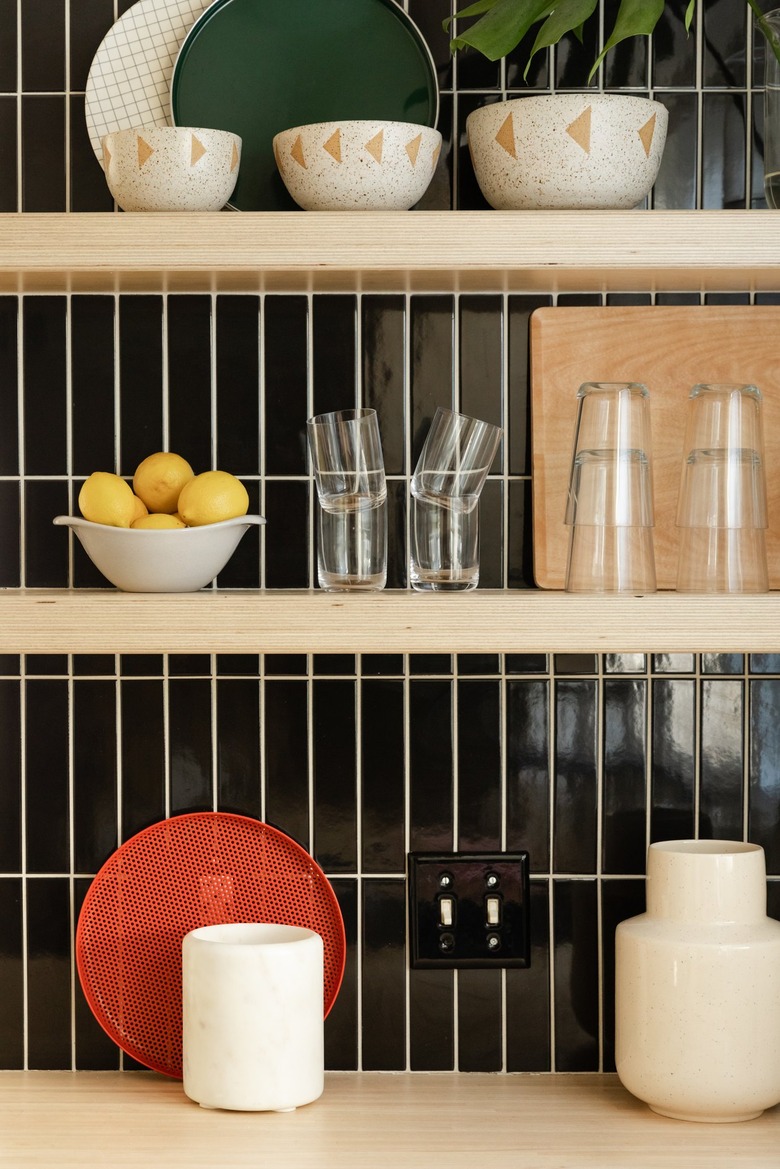Ceramic Tile Vs. Granite
Choosing between granite or ceramic tile isn't a simple either/or choice. Where the tiles are being used, the ease of installation, cost, replacement, and neighborhood trends all factor into the decision.
Personal preference is also a consideration when deciding between granite versus ceramic tiles, with the dramatic and exclusive patterns found in granite competing with the elegant and intricate colors and designs baked into ceramic. Both are relatively natural materials, with one formed millions of years ago and the other comes fresh out of a kiln.
Reasons to Choose Granite Tile
Reasons to Choose Granite Tile
Granite is the hardest natural stone, resistant to staining and with excellent moisture-repellent qualities. It's easy to clean and only needs sealing on a yearly basis. Hot pans or casseroles direct from the oven can be placed on a granite surface without damaging the stone. People can also prepare food on clean granite surfaces since they're very hard and knives will have little to no effect.
Staring into a slab of granite can be mystical, as it reveals millions of years of evolution. Some slabs contain fossils embedded in prehistoric times. A piece of granite is a piece of Earth's history.
Reasons to Choose Ceramic Tile
Reasons to Choose Ceramic Tile
The variety of colors and designs, sizes, and shapes found in ceramic tiles makes them a useful design tool. A field of square or rectangular tiles bordered in tile scrolling or medallions adds elegance to a kitchen or bathroom.
Resistant to staining or etching, a ceramic tile that is glazed provides the best protection against kitchen elements. Glazed tile surfaces don't need to be sealed, but standard cementitious grout should be sealed to prevent staining.
Cost of Installation
Cost of Installation
Granite is the more expensive material to install, with prices ranging from $40 to $60 per square foot at the time of publication, depending on the slab chosen. A template must be created, cutouts for a sink and hardware done at a factory, and experienced professionals must install the slab. One mistake can ruin the entire slab of granite. Professional installation cost runs from $2,000 to $4,500 on installation and materials to install a granite countertop. Ceramic countertop tile, on the other hand, can be laid by a do-it-yourselfer. Mistakes are easily corrected.
Not What it “Seams”
Not What it "Seams"
Seamless countertops that are one continuous surface, such as those found with granite, avoid staining and seepage from food. Granite slabs used to be seamed on the horizontal edge to create a beveled or bullnose finish, but designers now prefer the solid slab of either a 3/4-inch or a 1 1/4-inch thickness. However, solid slabs can get pricey depending on how large they are.
Ceramic tile is laid with grout between the tiles, picking up food deposits and discoloring over time and use. Stain-proof epoxy grout lasts longer and is easier to clean than cement grout. You can choose different sizes of ceramic tiles, so while you might not end up with a solid slab, there are ways to have less grout.
Added Home Value
Added Home Value
If adding value to your home is a goal, consider your neighborhood trend. If the majority of homes display granite tiles for kitchen countertops, and you want to get top dollar when you sell (which you do), your best bet may be to also go with granite.
If your kitchen is older and hasn't been upgraded, you can use ceramic tile to freshen the counters and make your kitchen appealing. This is a more cost-effective way to give your kitchen an updated look. Kitchen and bathroom upgrades, especially those made with granite, add more value to a home than practically any other improvement.
